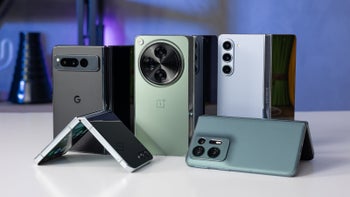When you purchase through links on our site, we may earn an affiliate commission. This doesn’t affect our editorial independence.
The Battle of Innovation: Traditional Smartphones vs. Foldables
The tech industry has been held hostage by smartphones for more than a decade. Nevertheless, the boundaries are being tested as foldable phones have entered the market. Are they a true evolution or just a cheap trick? The fight between old smartphone models and those with folding screens is hot. As major brands begin investing in foldable technology, the question is—should you switch to or stay with the original?
First, the fight of smartphones vs. foldables will be scrutinized to determine which will remain the top and king in 2025.
Round 1: Design & Build Quality
Smartphones: The Old-School Champion.
The design of traditional smartphones is slim, compact, and sturdy. Modern phones are made to last now thanks to things like Gorilla Glass and aerospace-grade aluminium. Their single-screen format makes them easy to use while also being a comfortable size for pockets and hands.
Foldables: The Attention-Grabbing Challenger
Foldables are innovation incarnate. They offer the retro appeal of flip phones with the addition of cutting-edge tech. Larger screens offer an immersive experience, but durability is still a major concern. Hinges and foldable screens offer points of weakness, and early models suffered from screen creases and damage from dust.
Winner: Conventional Smartphones— Their proven durability and compact size currently make them a safer bet.
Round 2: Display & User Experience
Smartphones: Reliable and High-Quality
Smartphones have seen massive improvements in refresh rates, HDR support, and OLED technology. Displays are sharper, colors are more vibrant, and touch response is excellent. The functionality of a solid, non-folding screen makes them ideal for everyday use.
Foldables: A Game-Changer for Multitasking
Foldables provide something different and new—a larger screen in a smaller form factor. Having the ability to switch between a regular-sized phone and a tablet-sized device is a big advantage for professionals, gamers, and multimedia consumers. Multitasking is also easier, with some foldables featuring multiple apps open at the same time side by side.
Winner: Foldables— Having the flexibility of a bigger screen in your pocket is a game-changer.
Round 3: Performance & Battery Life
Smartphones: Always Powerful
Standard phones are an effortless breeze to use in gaming, video editing, and even AI features. With flagship devices boasting up-to-date processors like Qualcomm’s Snapdragon and Apple’s A-series chips, powerhouses are all that are needed. Thankfully, battery life is tuned for productive usage too, as many of these devices last a day or more.
Foldables
Even though foldable devices include high-end processors, the bigger displays are a power sink. Most foldable phones are not able to last for a single day on a charge. The battery drain is exacerbated because foldable phones have 2 screens. Even though manufacturers are, they have improved efficiency, but battery life is still behind when compared to normal phones.
Winner: Traditional Smartphones. Their battery optimisation, along with dependable performance, gives them the edge.
Round 4: Camera Capabilities
Smartphones
Smartphones led the way in mobile phone cameras. The Apple iPhone Pro and Samsung Galaxy S Ultra lines are just some of the traditional smartphones, which have remarkable zoom, high-quality lenses, incredible software processing, and computational photography for low-light conditions.
Foldables: They Satisfy, But Don’t Quite Impress
For photography lovers, traditional smartphones have nothing to worry about. Foldables come with good enough cameras; however, they are still no match to flagship smartphones. Given the design limitations, foldable phones usually make sacrifices in terms of sensor size and optical zoom. Some foldables have good-quality cameras, but are still a step or two behind the best smartphones.
Winner: Traditional Smartphones—If photography is your priority, they still lead the race.
Round 5: Durability & Longevity
Smartphones
The greater part of the flagship models are IP-rated nowadays; hence, they provide good water and dust resistance, which is why they are considered to have a long life. There are also, in the case of repair, some other plus points, e.g., fewer parts could move and cause the breakage.
Foldables: A Durability Concern
Foldable displays and hinges are commonly reported as the weakest parts of the foldable concept. Although foldable devices are perceptibly more rugged, their hinges and flexible displays are still relatively weak. A few models continue to be a source of disappointment for buyers, with some of the common technical mishaps such as screen creases and hinge wear. Technically, foldables are slowly improving. Nevertheless, as they are getting more robust, they are, without a doubt, not as reliable as traditional smartphones have been on the market so far.
Winner: Traditional Smartphones—They have the edge when it comes to the longevity and durability issue.
Round 6: Software Experience
Smartphones
Usually, the traditional smartphones come with a well-optimized software ecosystem. Apps on Android and iOS are created to be run on these screens and, as a result, give users no problems to experience the device smoothly. The situation with the app compatibility is marvellous, and you get new software every now and then.
Foldables
It is true that foldables are interesting and they have a multitasking option like a split screen, but if the application on it is not optimized for foldable screens, the users will have problems with it. A number of apps get stuck, and they can’t adjust to the correct size, so you cannot use them as they should. It not only eats up the battery but also creates a situation where you are forced to reboot the phone to make it normal again. However, software is improving as foldables become more and more popular.
Winner: Traditional Smartphones—Better app optimization makes them more user-friendly.
Round 7: Price & Value
Smartphones
For one thing, traditional phones come in many different prices. A customer might buy a cheap phone or a top model as a necessity. Premium phones are typically cheaper than foldables, even if they may be expensive.
Foldables
Finally, we can say that foldables are a kind of luxury today. The technology is still in its emerging stage, which makes them too expensive no matter what. Even mid-range foldables cost more than traditional flagship phones, meaning that they are not as affordable as regular phones.
Winner: Traditional Smartphones—They offer better value for money.
Future of Smartphones & Foldables
Are Foldables the Future?
Foldables are moving into the future. There is a steady enhancement in technology, which means in the future we will get to see foldable smartphones that would be much more durable, have better software optimization, and be sold at a much lower price. If these problems are fixed, foldables might even become the norm in a couple of years.
Will Traditional Smartphones Survive?
Absolutely not! Traditional smartphones are not just going away. They are still the first choice for those who are willing to have a device that is reliable, durable, and at the same time affordable. In case the manufacturers keep improving them, they will still keep handling the market we know today.
Verdict: Which Wins?
| Feature | Winner |
|---|---|
| Design & Build Quality | Smartphones |
| Display & User Experience | Foldables |
| Performance & Battery Life | Smartphones |
| Camera | Smartphones |
| Durability | Smartphones |
| Software Experience | Smartphones |
| Price & Value | Smartphones |
Foldables are indeed trendy, innovative, and cool, but are they better compared to traditional smartphones? No, they are not. Even though they come with unique specifications of a larger screen and multitasking is better, yet still they are not as good as far as “durability, battery life, software optimization, and affordability.”
If you are a tech lover who is into the latest and greatest and money is no object, foldables might be a good buy. However, most users will prefer traditional smartphones, which are now the wiser and safer option.
Would you switch to a foldable, or do you prefer the classic smartphone experience?








